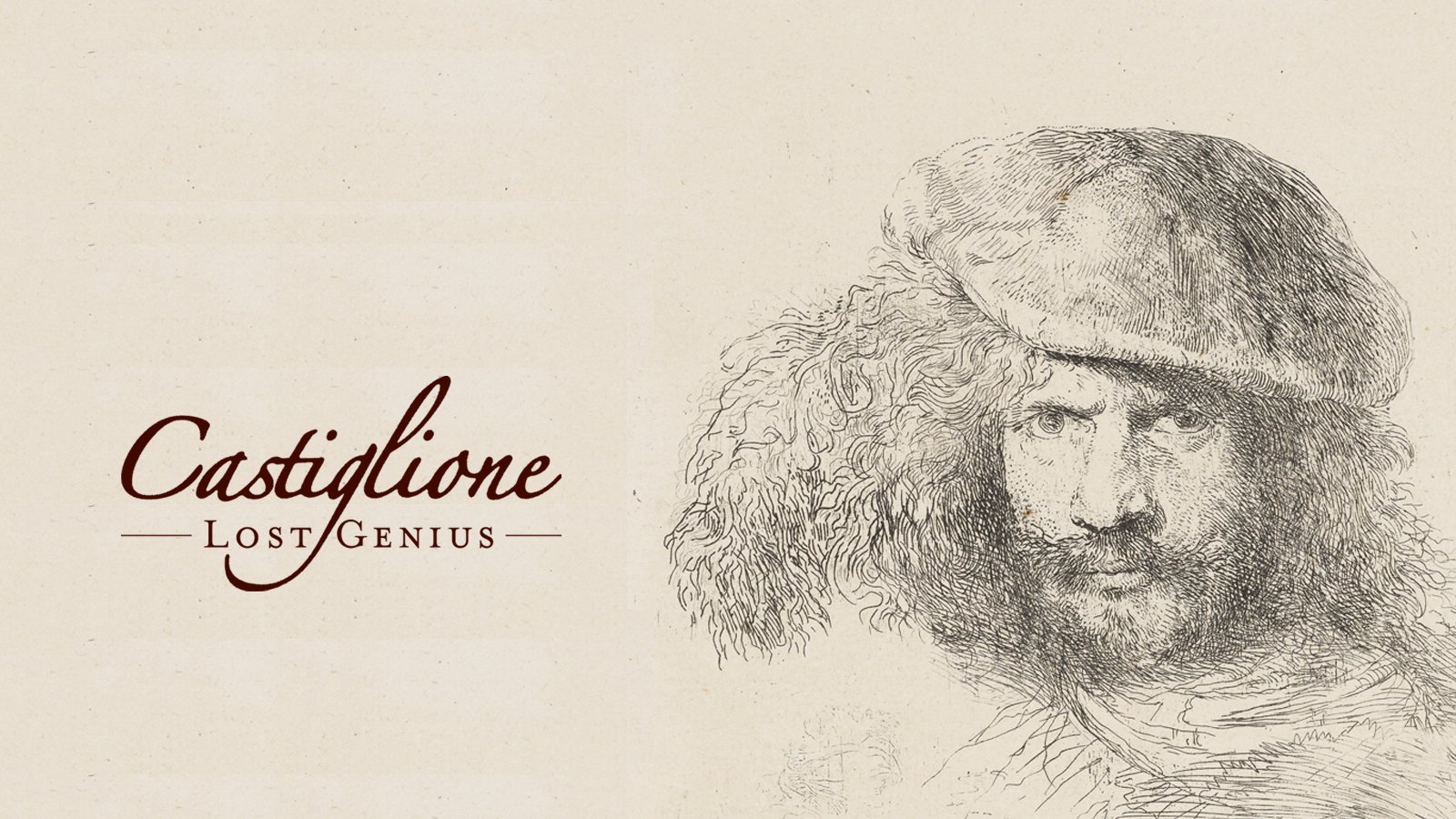
Etching
Etching is today the most widely used ‘intaglio’ process, whereby the line and tone of an image are created by exposing areas of a metal plate to acid. The acid reacts chemically with the areas of exposed metal to ‘bite’ the image into the plate. The longer the bite, the deeper the line.
Etching was used for decorating metal from the fourteenth century, but it was not used for printmaking before the early sixteenth century.
The seventeenth century was the great age of etching: Rembrandt is generally considered to have been the greatest exponent of the technique, and Castiglione was the first artist in Italy known to have borrowed directly from him. Castiglione’s etchings were heavily influenced by the strong light effects and natural expressiveness of the Dutch artist’s prints.
The basic process of making an etching is as follows:
- The surface of a metal plate is covered in a waxy ground which is resistant to acid.
- The image is drawn into the wax with a pointed etching needle, only removing the wax and not scratching into the plate.
- The plate is immersed in an acid bath.
- The exposed areas of the plate react chemically with the acid to eat away the metal, creating a furrow for the ink to sit in.
- The waxy material is cleaned off the plate.
- The plate is then covered in ink and the excess ink is wiped away, leaving ink only in the etched lines.
- The plate is put through the printing press with dampened paper on top of it. The paper is forced into the furrows where it picks up the ink, making a print.
As the works in Gifted demonstrate, etching continues to flourish as a printmaking technique today.







